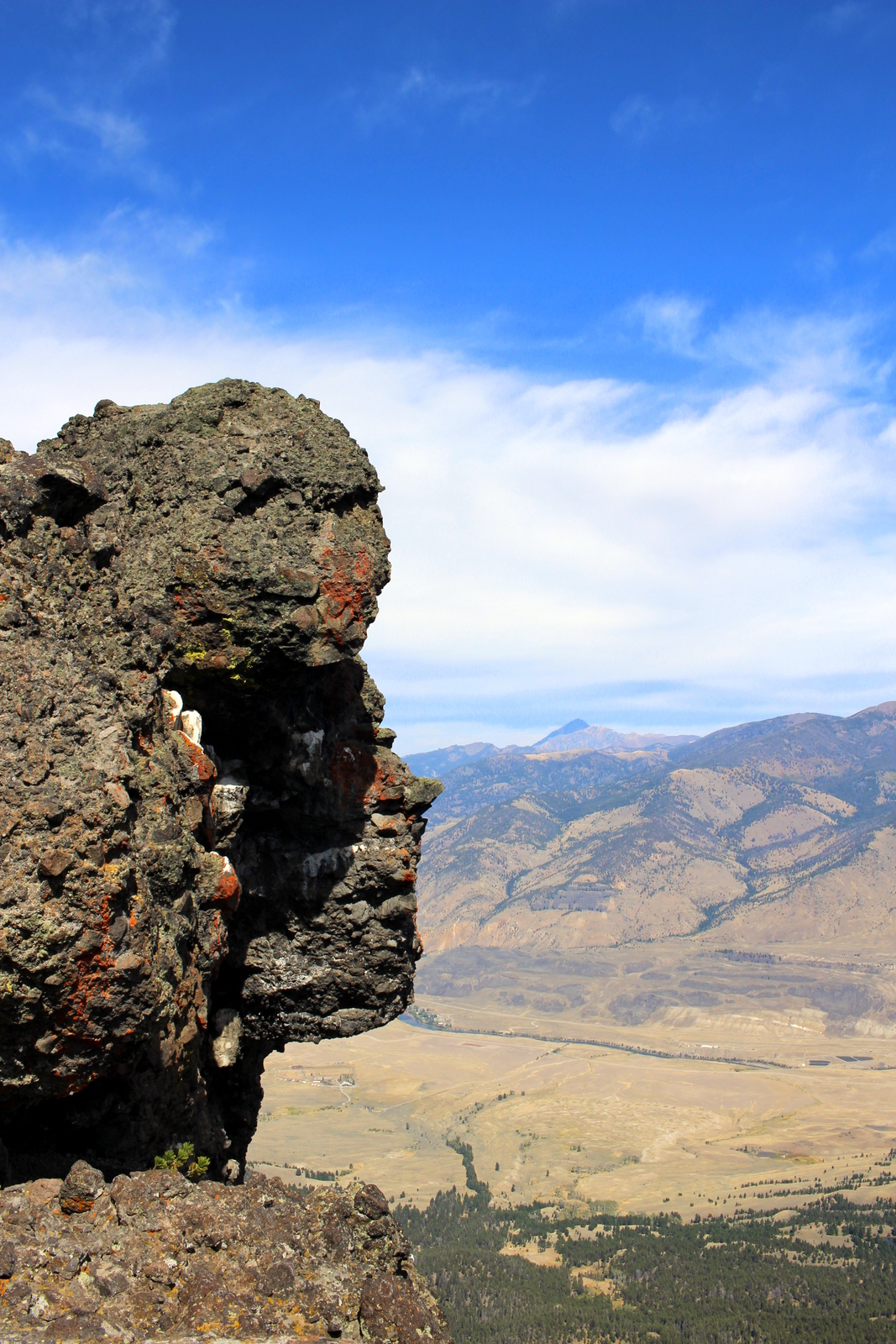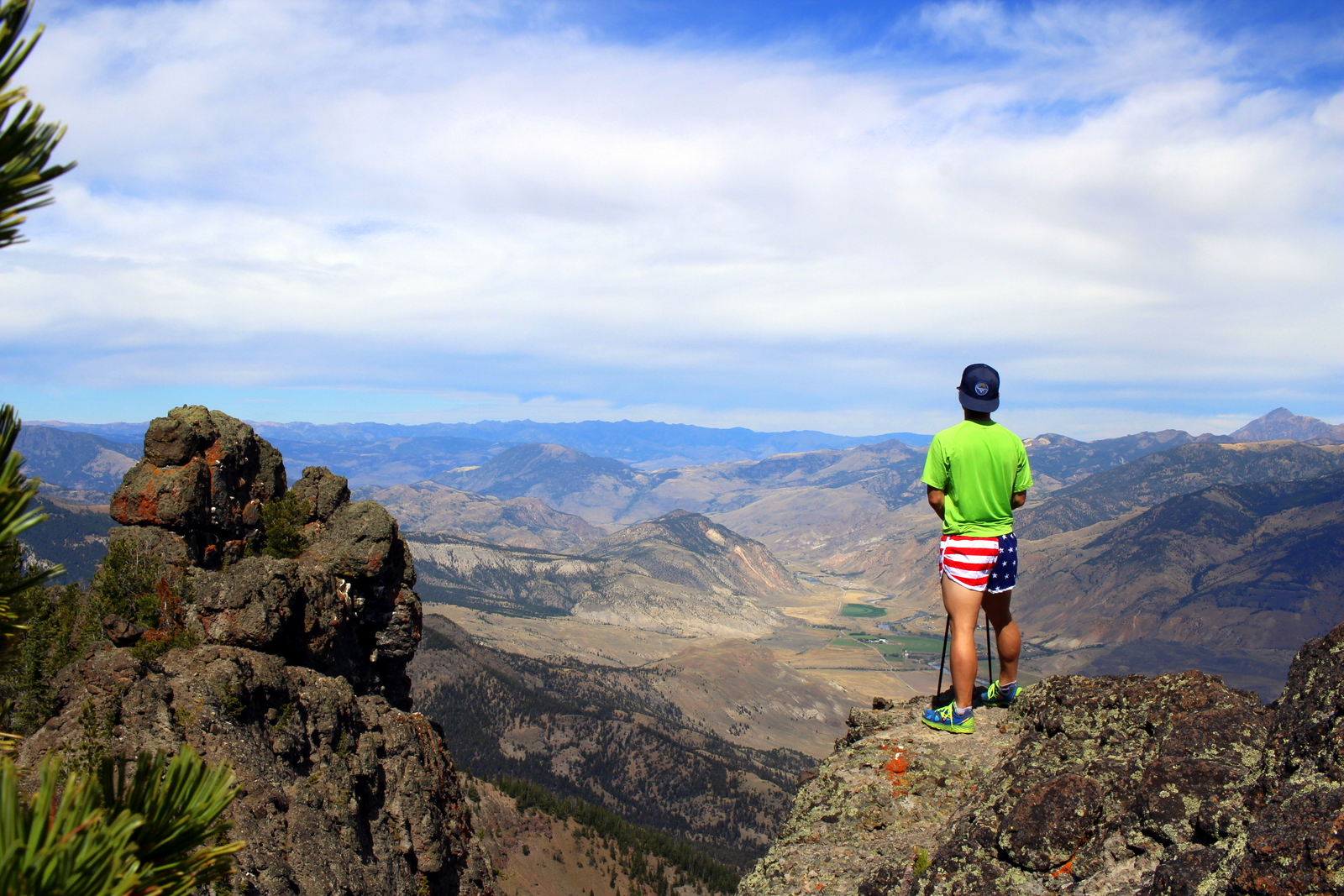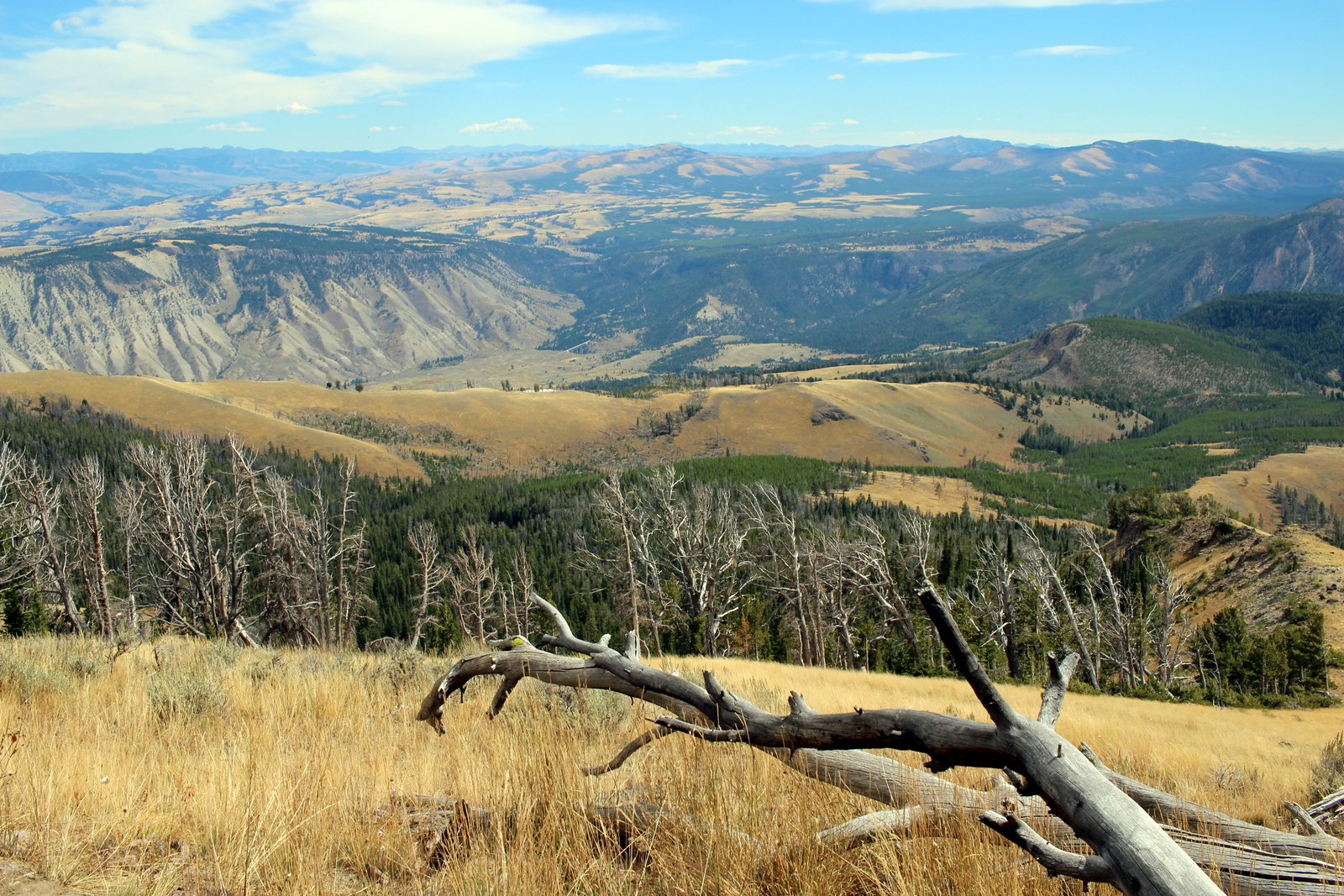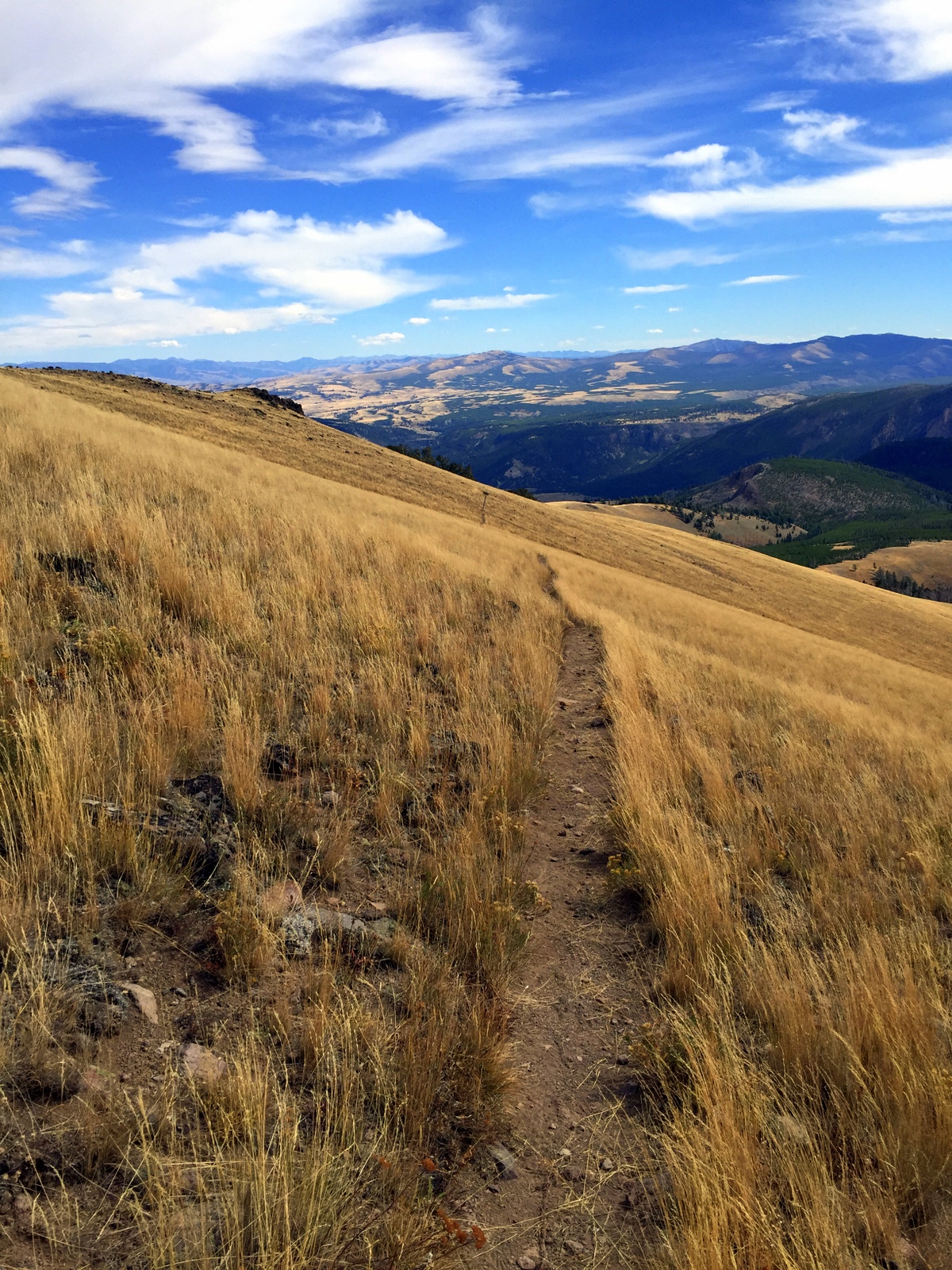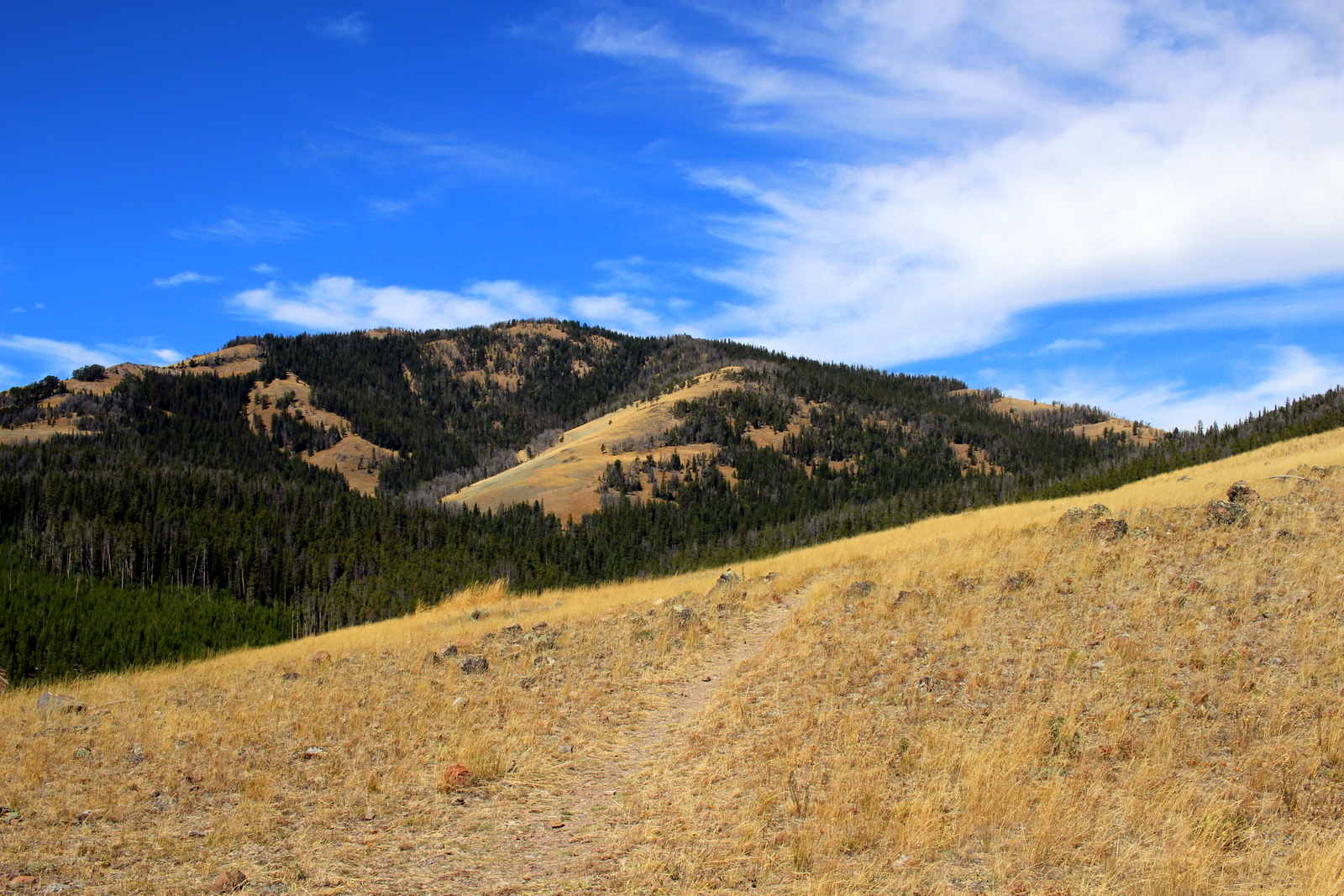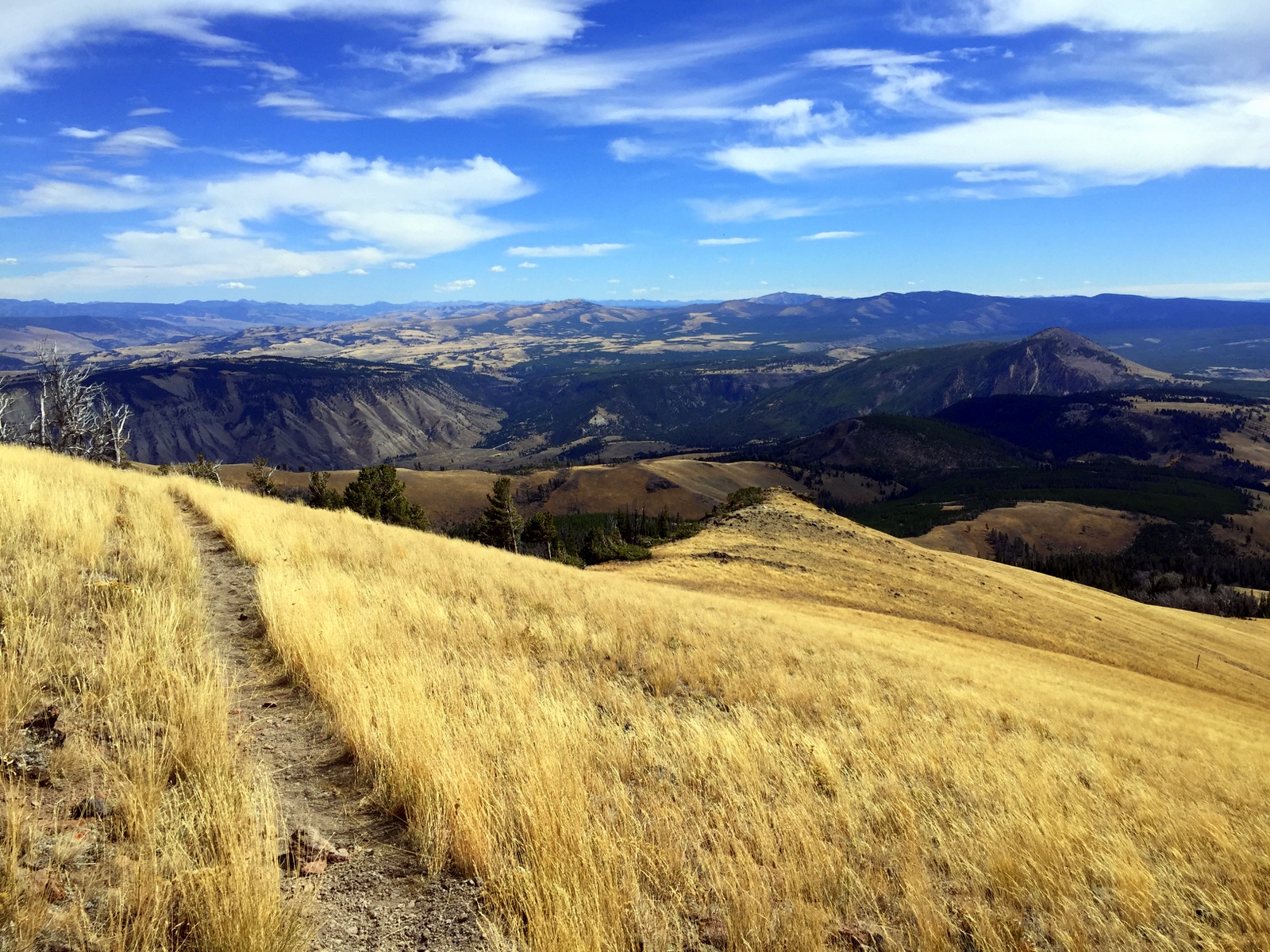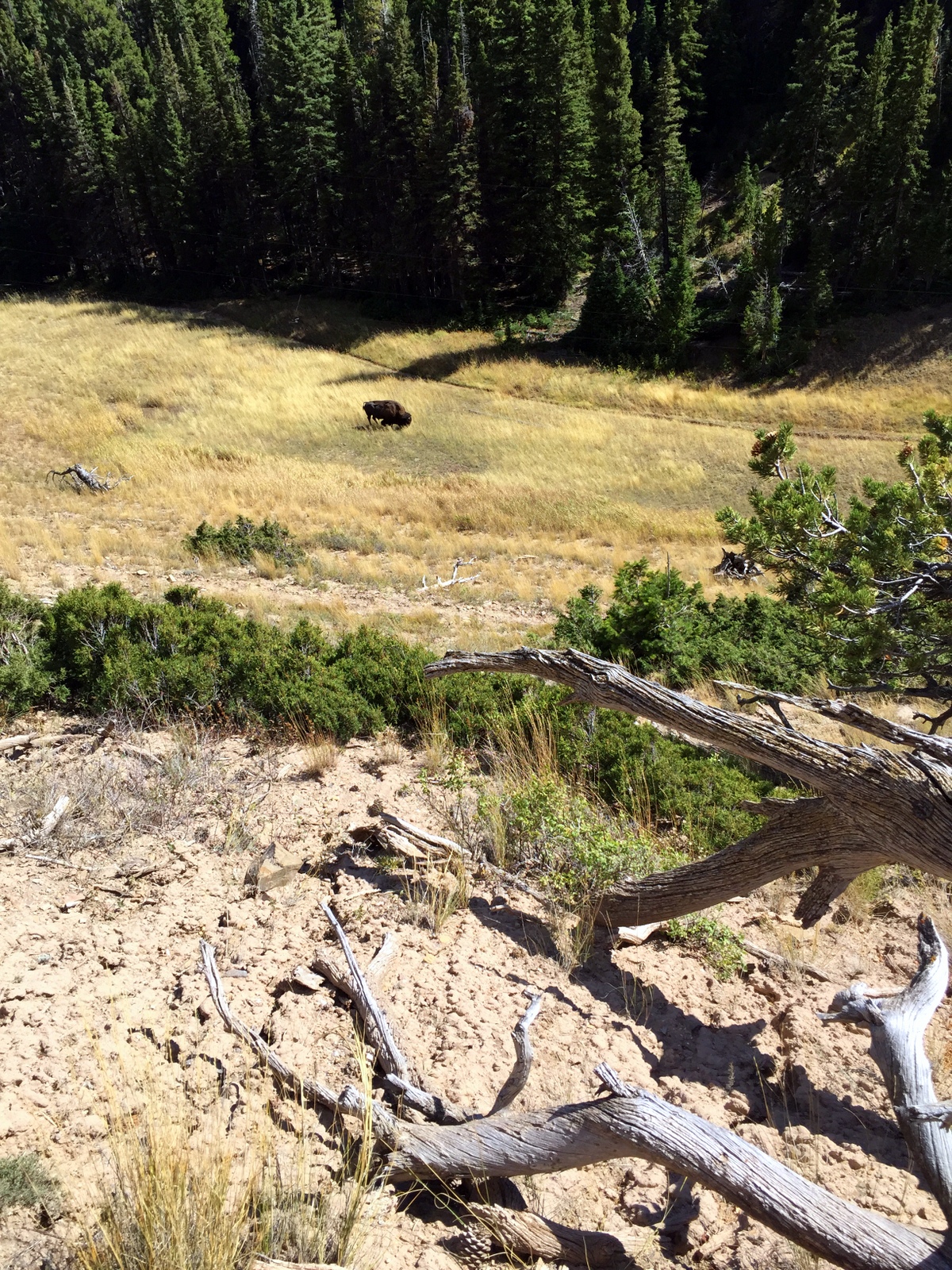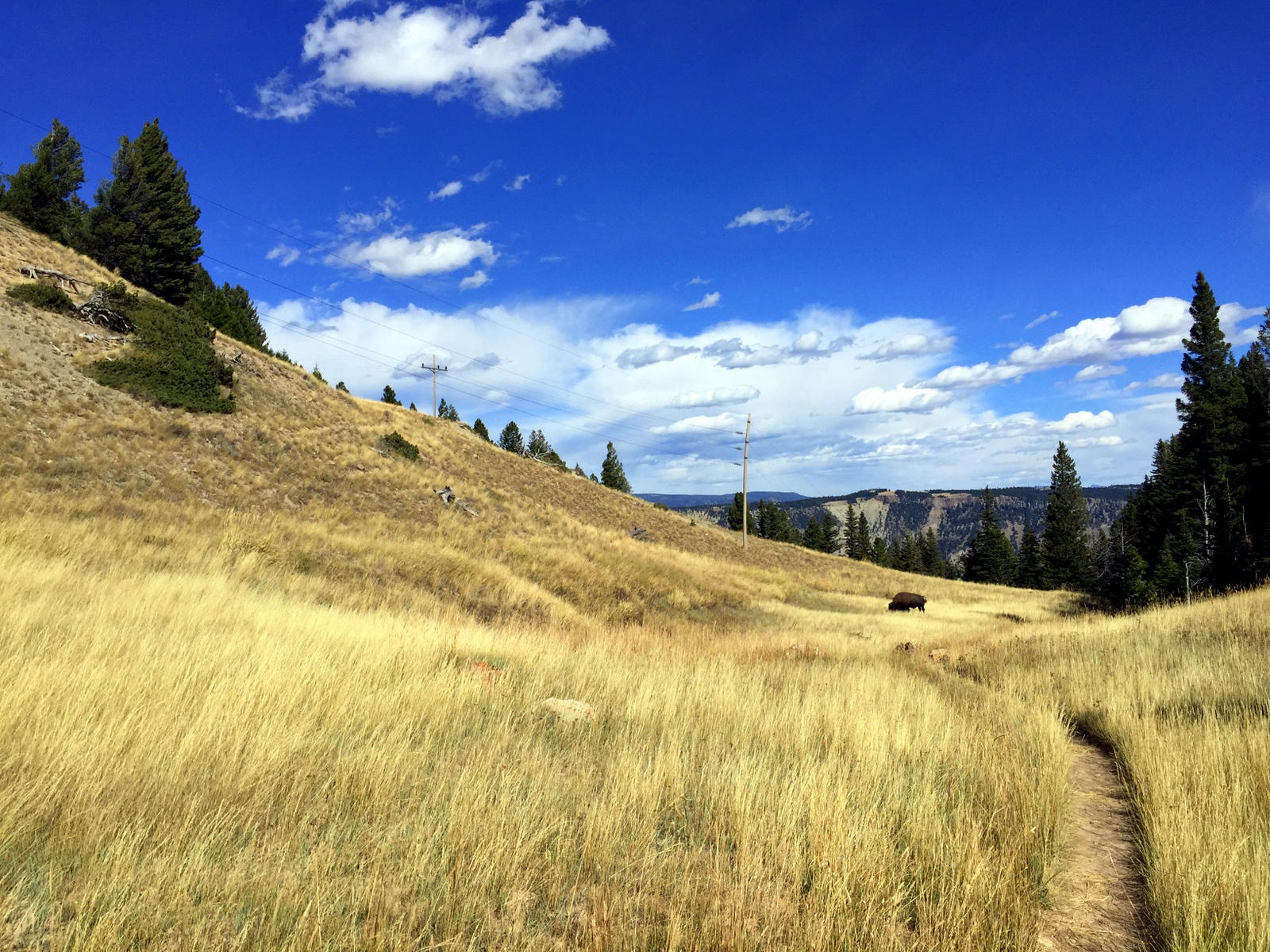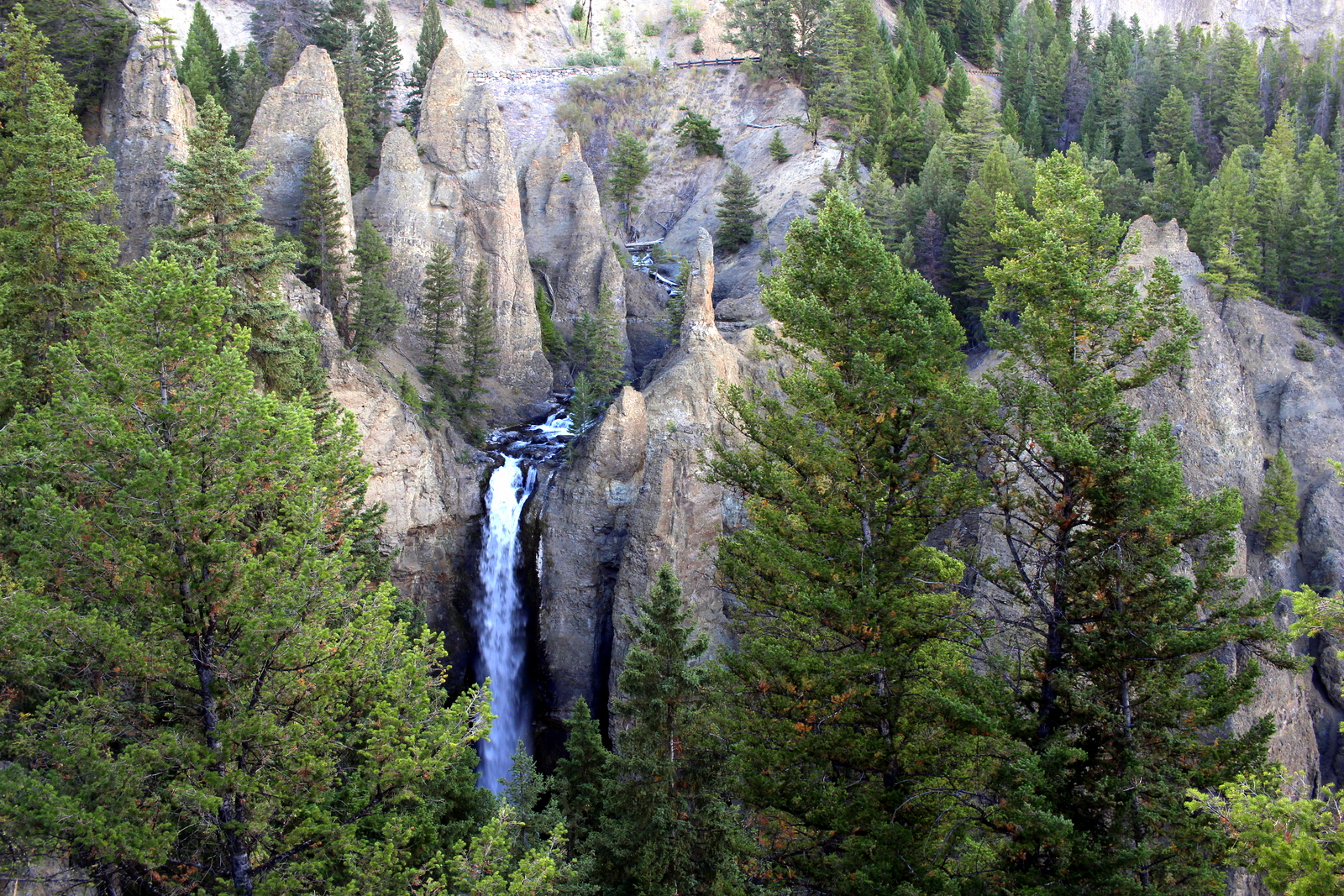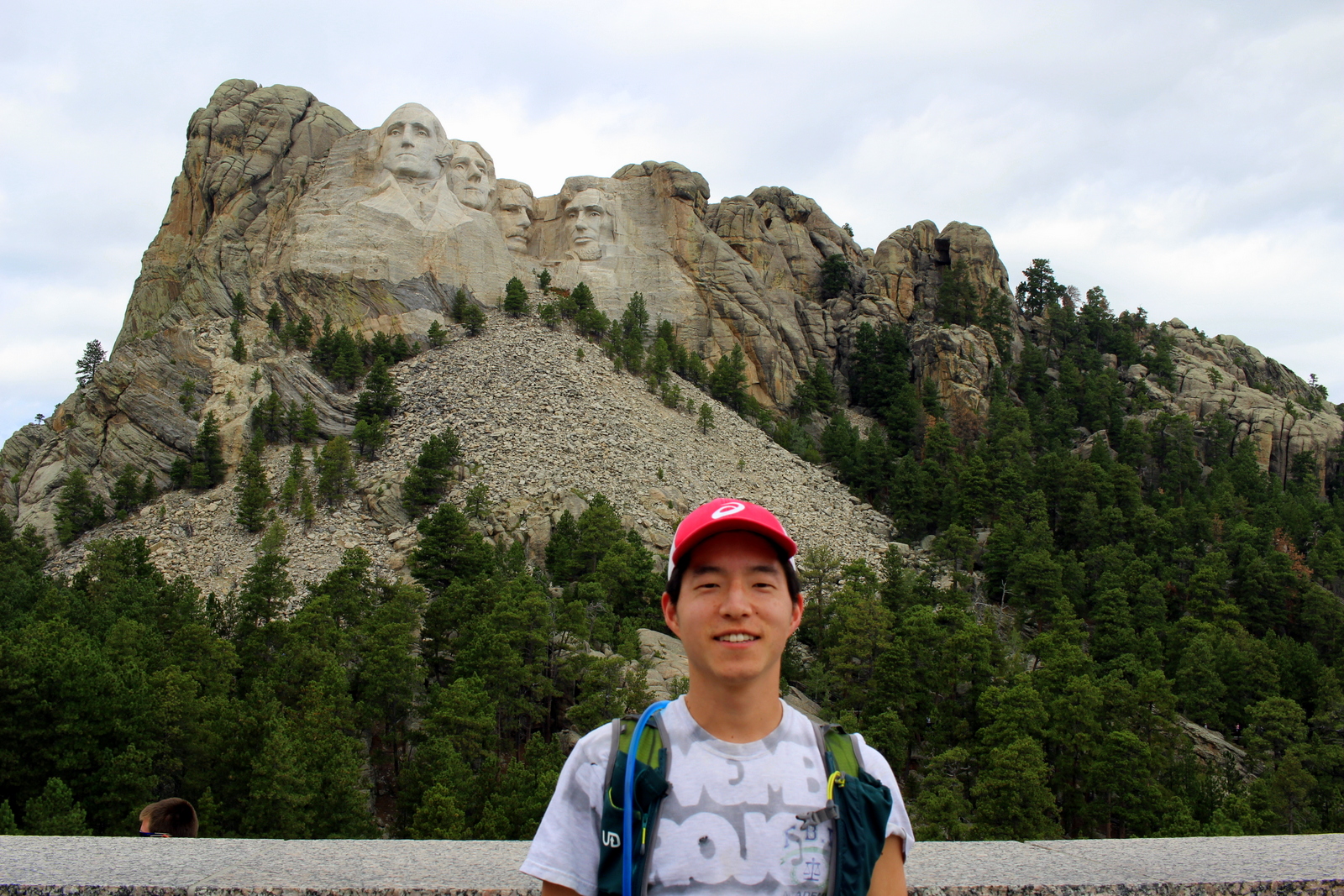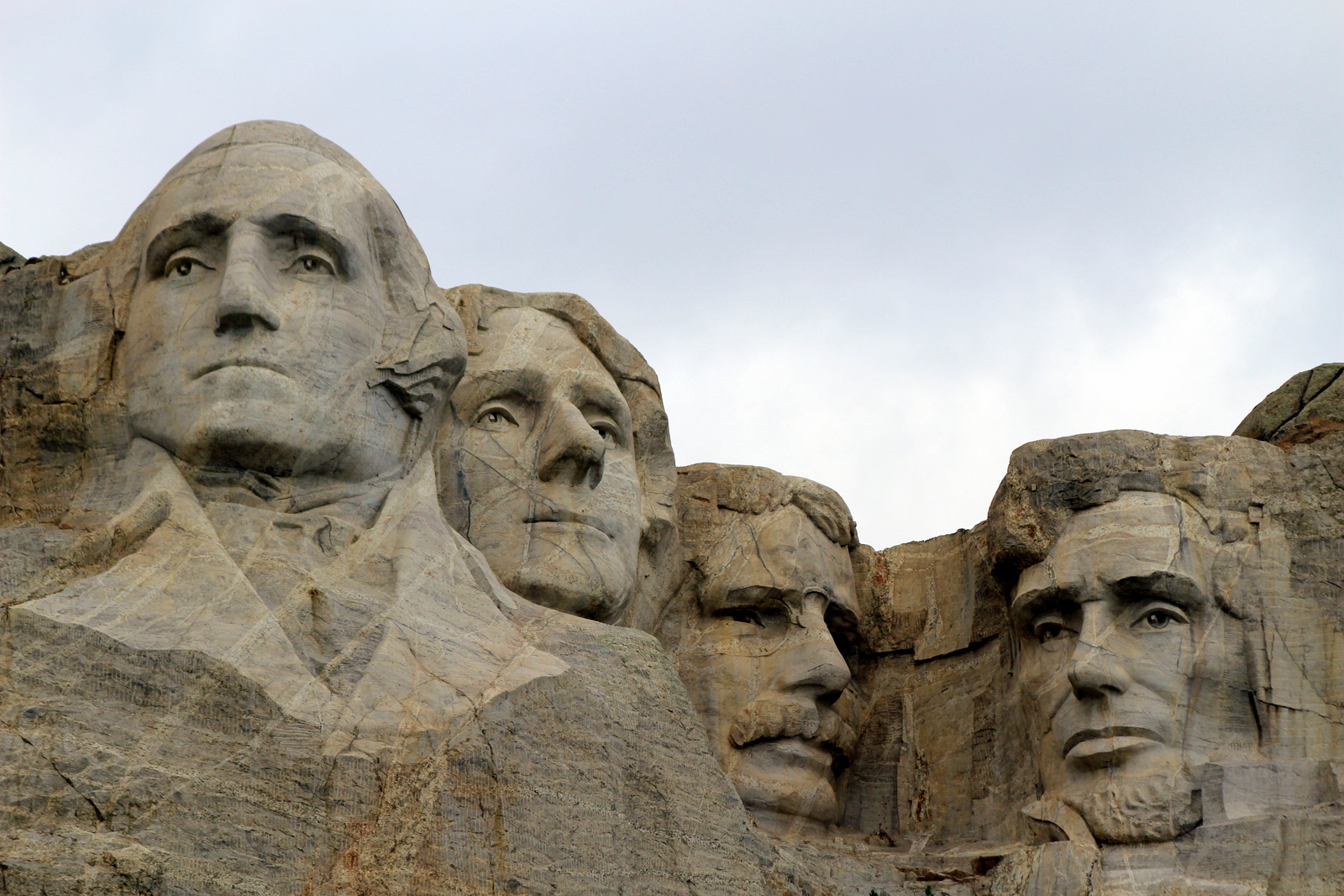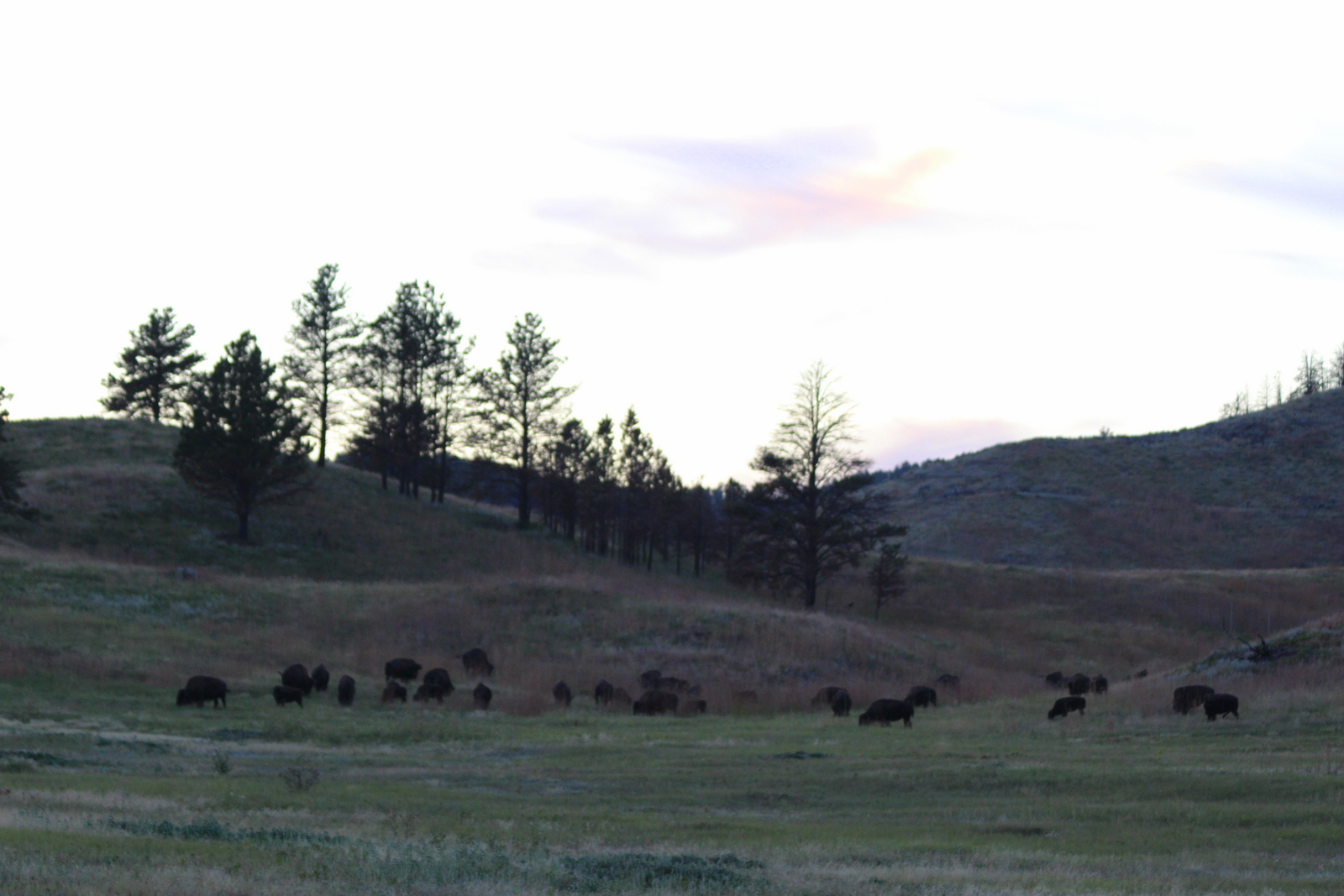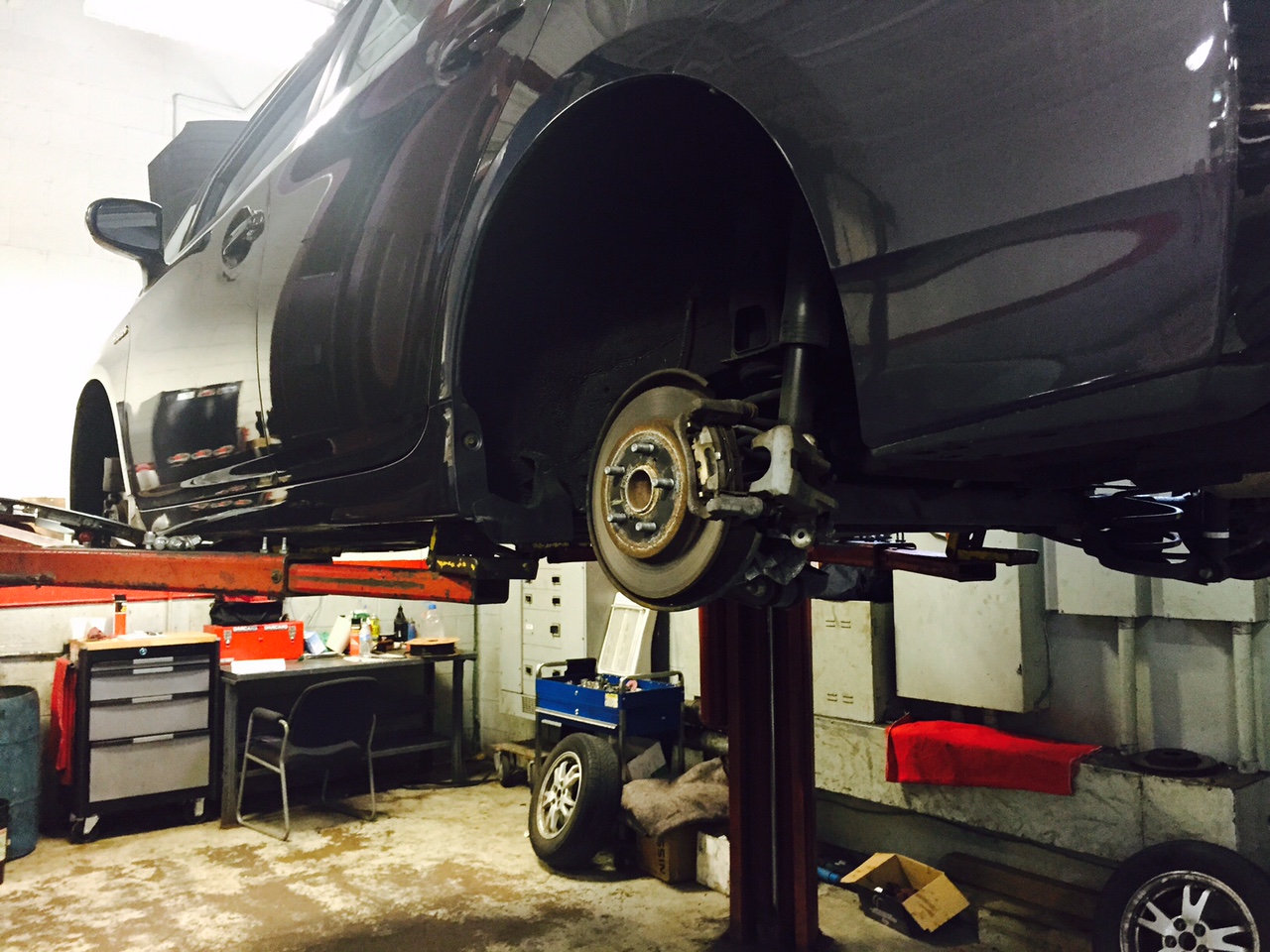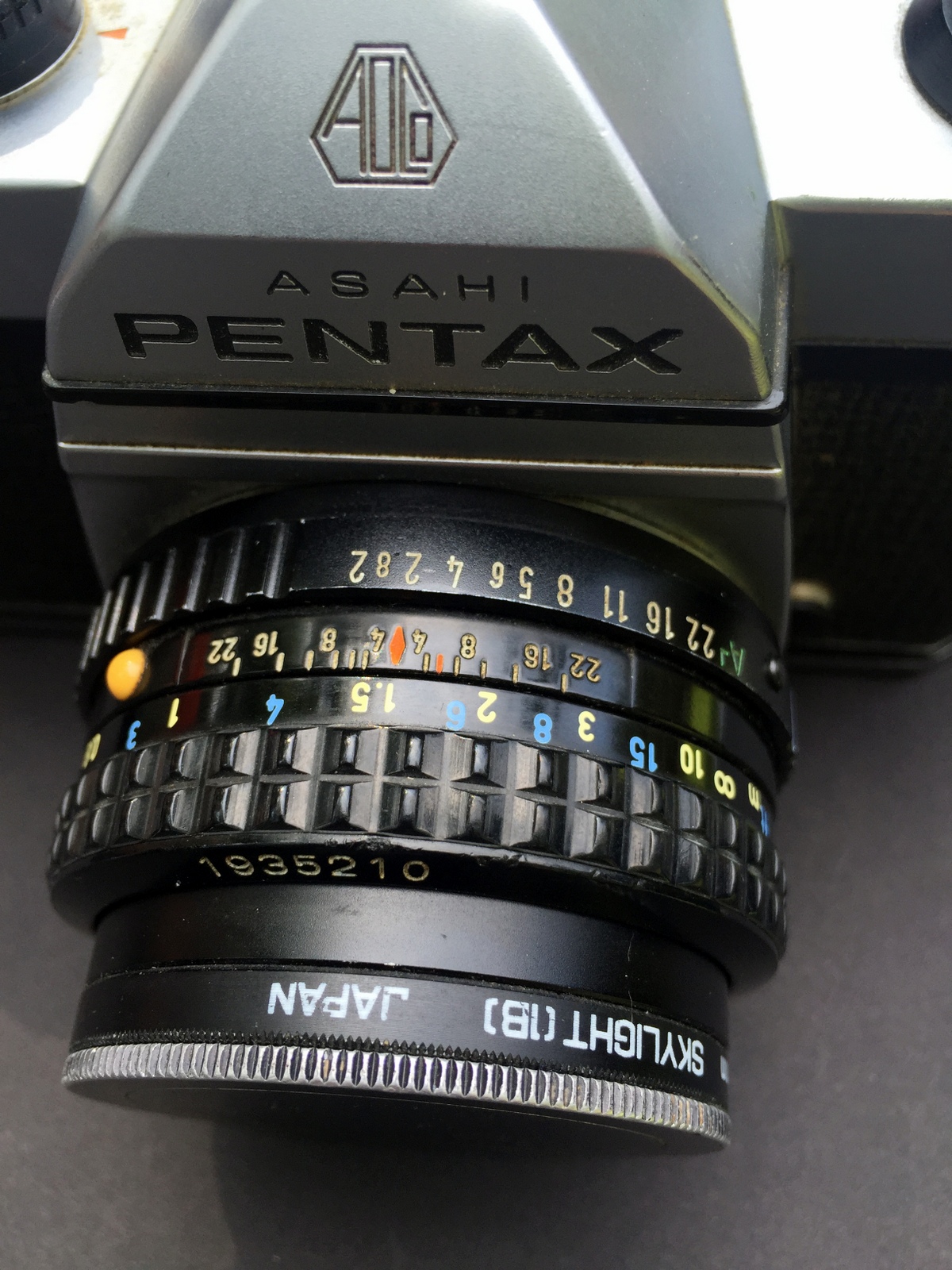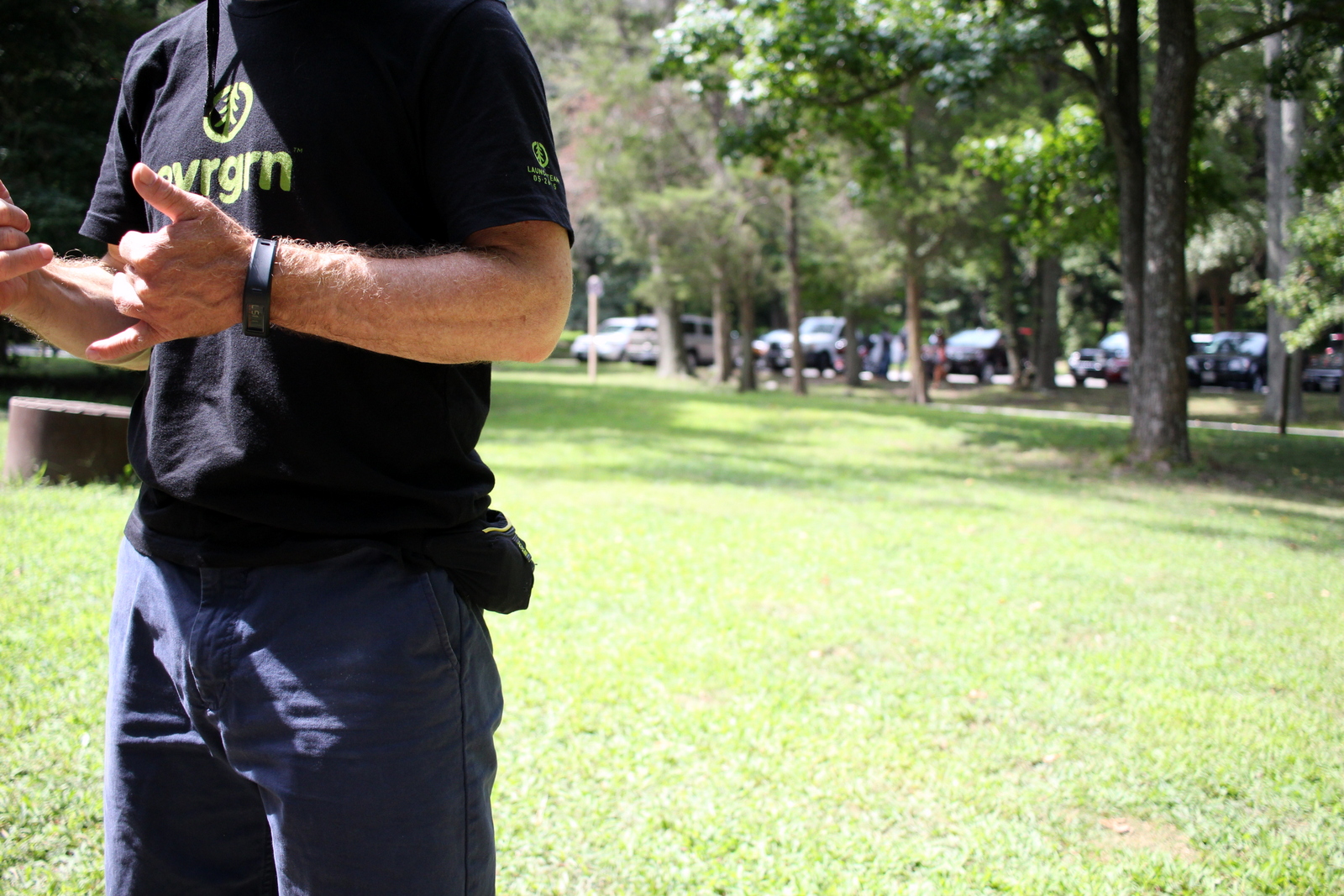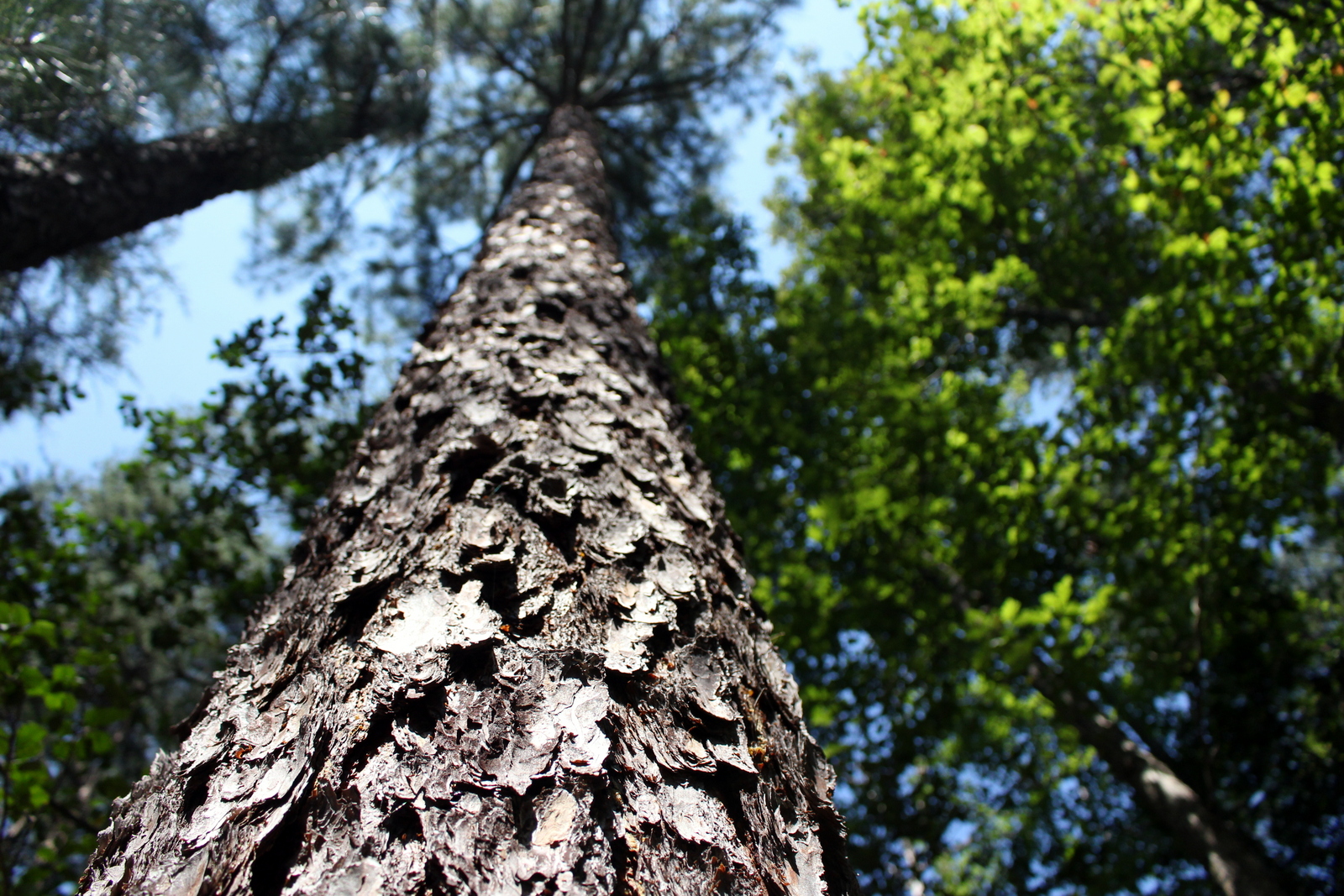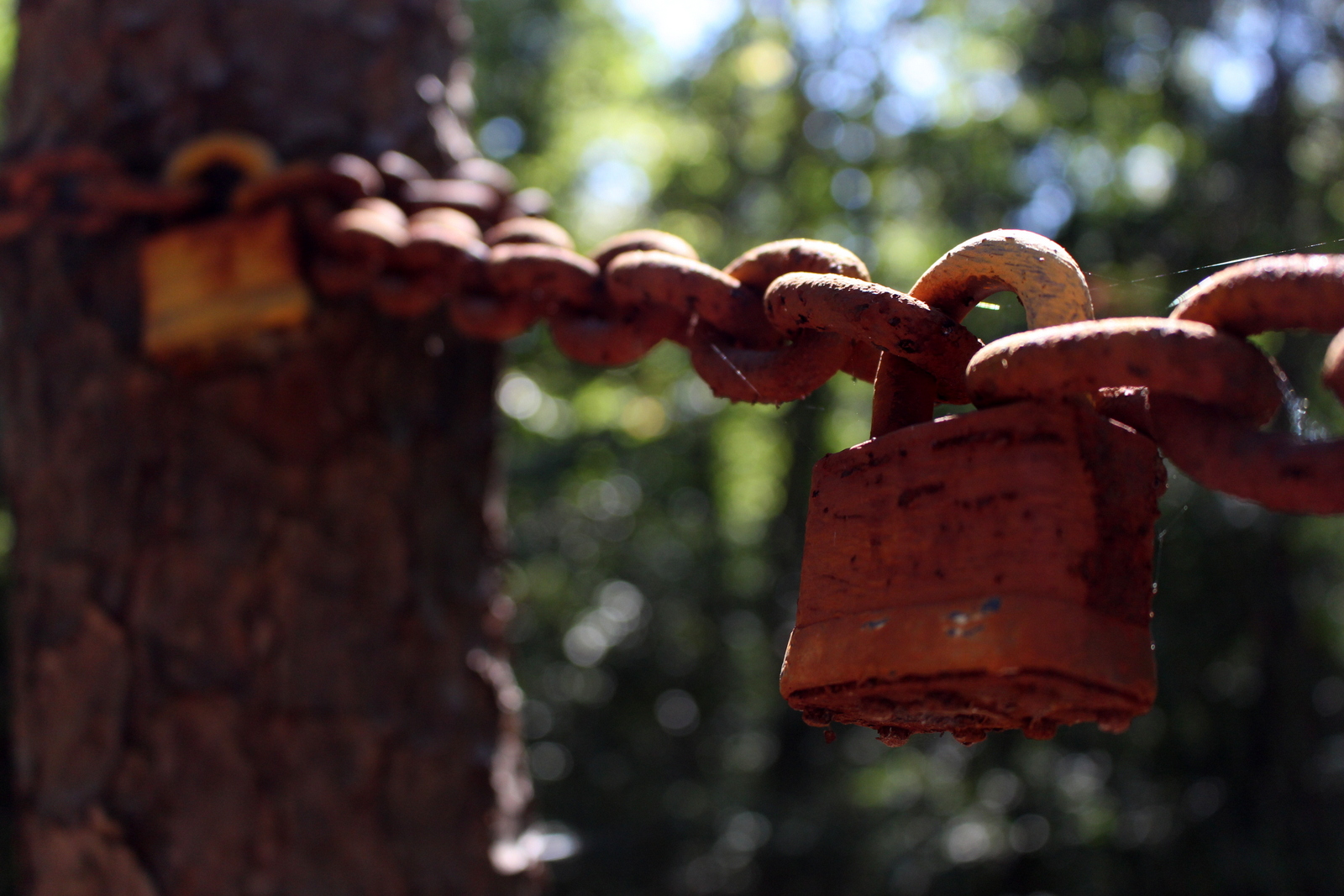It was bound to happen. Today was my first bad day of the trip. Two things went wrong. I couldn't get a campsite inside the park. And I learned that I wouldn't be running Electric Peak--the tallest mountain in the Gallatin Range--as originally planned.
I left Sheridan, Wyoming, a town just to the east of Bighorn National Forest, in the late morning. I was headed for Yellowstone National Park. I knew I needed to get there ASAP if I wanted to snag a campsite. Aside from the fancy lodges, and some privately operated sites, all of the park's campsites are first-come, first-served. If you're not there early enough, you'll miss out. Given that Labor Day weekend was over, I expected that the number of visitors in the park would have subsided somewhat. I was wrong.
Let's start with my drive. I had almost 300 miles to cover, including 60-some odd miles on a scenic byway through Bighorn. I completely underestimated how long the drive would take--and paid the price.
I departed Sheridan at 10:15 a.m., after looking at the Yellowstone campground website, which has live updates on each site. Two campsites had already filled up by 9:30 a.m. But I saw that there were still 5-6 other campsites that had availability. The website helpfully also shows the time at which a given site filled up on the previous day. Because I was planning to run Electric Peak in the northwest corner of the park, I looked at the campsites in that area and noticed that most of them hadn't filled up until late in the afternoon yesterday--and that was Labor Day. So I figured I'd be safe if I arrived in the early afternoon.
But I ended up moving very slowly. I guess part of my determination and focus--my with-it-ness--was gone today. I just took it easy, way too easy. I made frequent stops, to fill up gas; for a long (and delicious) lunch in Greybull, another frontier town; and even to put my car through a wash for 15 minutes (my car was gross). In Cody, the last major town before entering Yellowstone from the east, I stopped at an outdoors store to pick up bear spray. And when I began the drive into Yellowstone, I stopped at Buffalo Dam to take photos and just see the engineering marvel first-hand.
All of this meant that I arrived at the east entrance to the park just before 4 p.m. I hadn't had cell signal for quite some time, so I didn't know what the status of the campgrounds was. But right at the east entrance was a board with all of that information. To my dismay, almost all of the campgrounds were already full! I couldn't believe it. I was, however, relieved to see that Indian Creek, in the northwest corner, still had vacancies. I asked the ranger at the entrance what he thought my chances were. He said he had no way of knowing, but that if I was serious about snagging a spot, I should head there ASAP.
I did that--or tried to. Yellowstone is a massive park. It's larger than the states of Delaware and Rhode Island combined. Getting from the east entrance to Indian Creek is almost 70 miles of windy 35- to 45-mph roads. And the Grand Loop, the figure-eight road that connects the major regions of the park, was packed with cars. Moving quickly was impossible.
I was also distracted by all of the sights. I told myself that I'd have all day tomorrow and part of the morning Thursday to linger and truly explore the park. The priority first had to be finding a place to stay inside the park. But I kept stopping on the side of the road, taking photos of the wildlife (bison, elk, birds of various kinds). I even stopped in the visitor center at Fishing Bridge to see if there was any updated information on campgrounds. (There was none.)
After waiting for 30 minutes in a roadwork-caused, single-lane segment of the Grand Loop, I finally made it to Indian Creek at 6:15. The sign noted that the campground was full. I went in anyways, hoping that the sign was wrong. Unsurprisingly, it was right. I spoke to the host, and he noted that the site had filled up at 5:30. If I hadn't lingered all day, I would've been in fine!
I then considered my options. I could drive all the way to the south entrance of the park, where one campground still had availability. Or I could drive past the north entrance into Montana and stay in the border town of Gardiner.
I decided to head north. Gardiner was only 12 miles away. The south entrance was a good 2 hours away, maybe more. Because it was already getting close to dinner time, I decided I'd just bite the bullet and stay in a motel there. When I dropped down out of Yellowstone into the valley below, I realized that Gardiner was quite a small town. I immediately began to worry that all the lodging would be full, too.
Gardiner was completely sold out. I went into one inn, talked with the host, and learned that all the hotel and motel operators communicated with each other about availiability. Nothing was available now. She handed me a sheet of paper with lodging options listed for Livingston--a town that was almost 60 miles north!
I couldn't believe it. I'd driven all day, and everything had fallen apart. I had driven into, and straight through the park. And I potentially needed to drive past the park for another 90 minutes. Thankfully, I learned about a primitive campground just outside the town. I hustled there and got a makeshift tent site--the host basically let me stay even though there were no real campsites left.
So that explains the first way my day went bad. The other way is that I'm no longer running Electric Peak. In fact, I'm no longer running at all. I'll be hiking instead. Simply put, I underestimated not only the significance of being in bear country, but also my experience as an outdoorsman.
On the way out to Gardiner, I had stopped at the Mammoth Hot Springs visitor center. I talked to the ranger about my plans, and she was basically astonished by what I was proposing. She strongly recommended against doing Electric Peak solo, and she also strongly recommended against running at all. Bears are more likely to be surprised by runners. And bears can also view a running human as prey, which can set off a chase instinct.
The last thing I want to do is underestimate the power of the wild and get mauled by a bear. So I've decided that I'm not going to run--at all. I've also decided not to hike Electric Peak. Instead, I'll hike a mountain that doesn't go as far into the backcountry.
Sitting in this cowboy bar in Gardiner, I've had a lot of time to think about how today went. Frankly, missing out on a campsite was stupidity on my part. But I'm much more okay with the second "mishap". I'm not here to prove anything. Better to respect the wilderness. And the hike that I'll do instead (Sepulchre Mountain) will still let me experience the wonder that is Yellowstone. (Yes, this place is magical. ) Here's to tomorrow.






















































































